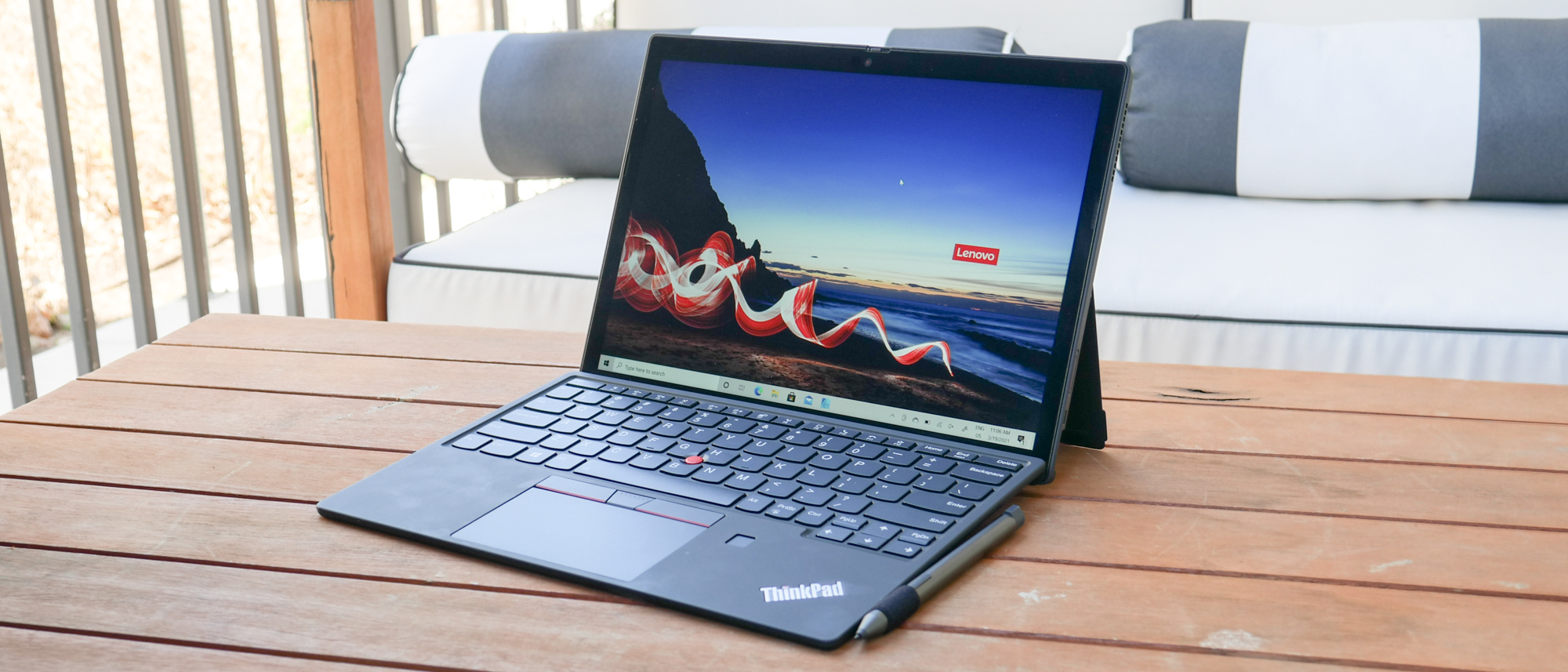Laptop Mag Verdict
Lenovo's ThinkPad X12 Detachable is an excellent 2-in-1 tablet for business users — one that edges out the Surface Pro 7+ in many ways.
Pros
- +
Solid performance
- +
Long battery life
- +
Good 12.3-inch display
- +
Excellent keyboard
- +
Accessories come bundled (depending on the region)
Cons
- -
Terrible speakers
- -
No USB Type-A
Why you can trust Laptop Mag
Price: $1,337
CPU: Intel Core i5-1130G7
GPU: Intel Iris Xe
RAM: 16GB
Storage: 512GB
Display: 12.3-inch, 1920 x 1280-pixel
Battery: 11:06
Size: 11.2 x 8 x 0.3 inches
Weight: 1.7 pounds (2.4 pounds with keyboard)
If you are looking for a tablet that can convert into a laptop and favor Windows 10 over macOS, my first inclination would be to steer you toward the Surface Pro 7 (or Surface Pro 7+ for business users). Microsoft's flagship tablet is the obvious and frankly, safe choice among these unique hybrids. But not anymore. With the ThinkPad X12 Detachable, Lenovo takes the Surface Pro concept and improves it with all the goodies associated with the "ThinkPad" brand.
Those include a durable, yet lightweight chassis, a relatively bright and vivid 12.3-inch display, and a comfortable keyboard that, along with a stylus, comes bundled with the ThinkPad X12 Detachable. And unlike the Surface Pro 7+, the ThinkPad X12 lasts for a full day on a charge, although that can be attributed to using low-powered CPUs. There are a few shortcomings — the speakers and cameras aren't great and there is no USB Type-A port — nonetheless, the ThinkPad X12 Detachable is a standout option for business users who are frequently on the go. It's one of the best ThinkPad machines around.
Lenovo ThinkPad X12 Detachable price and configuration options
ThinkPads are expensive and the X12 Detachable is no exception. However, at the time of writing, you can get a generously configured model for not much more than the base version.
Speaking of which, the entry-level configuration costs $1,097 and comes with an Intel Core i3-1110G4 CPU, 8GB of RAM and a 256GB SSD. We recommend spending $1,403 on our review unit, which has a Core i5-1140G7 CPU with 16GB of RAM and a 512GB SSD.
If you need more oomph, $1,409 will get you the Core i7-1160G7 CPU — um, yes you should absolutely spend $6 on that processor upgrade. Finally, the top-end model goes for $1,655 and comes with a Core i7 and 16GB of RAM along with a 1TB SSD.
Lenovo ThinkPad X12 Detachable design
Take the traditional ThinkPad design, remove the bottom half, and you essentially have the ThinkPad X12 Detachable, a 2-in-1 with the same form factor as the Surface Pro 7+. While it serves the same purpose as the Pro 7, the X12 Detachable has a very different look and feel. Made of magnesium alloy, the tablet weighs just 1.7 pounds, or about the same as the Surface Pro (1.8 pounds).

However, the ThinkPad X12 Detachable has a matte-black finish with a slightly gritty texture, a stark contrast to the smooth silver magnesium on its rival. On the rear is a diagonal ThinkPad icon with the red-illuminated "i" next to a centered camera lens. On the bottom-left corner is a rectangular plate with "Lenovo" etched in.
Sign up to receive The Snapshot, a free special dispatch from Laptop Mag, in your inbox.
Small speaker grilles flank the display on both sides while a thin vent sits beside a power button on the top edge, opposite an 8-pin connector where the keyboard attaches.
Turn the tablet around and you'll spot a 12.3-inch display bordered by relatively thick bezels (once again, the X12 Detachable takes a page from the Surface Pro). Above the screen is a webcam with a sliding lens cover.
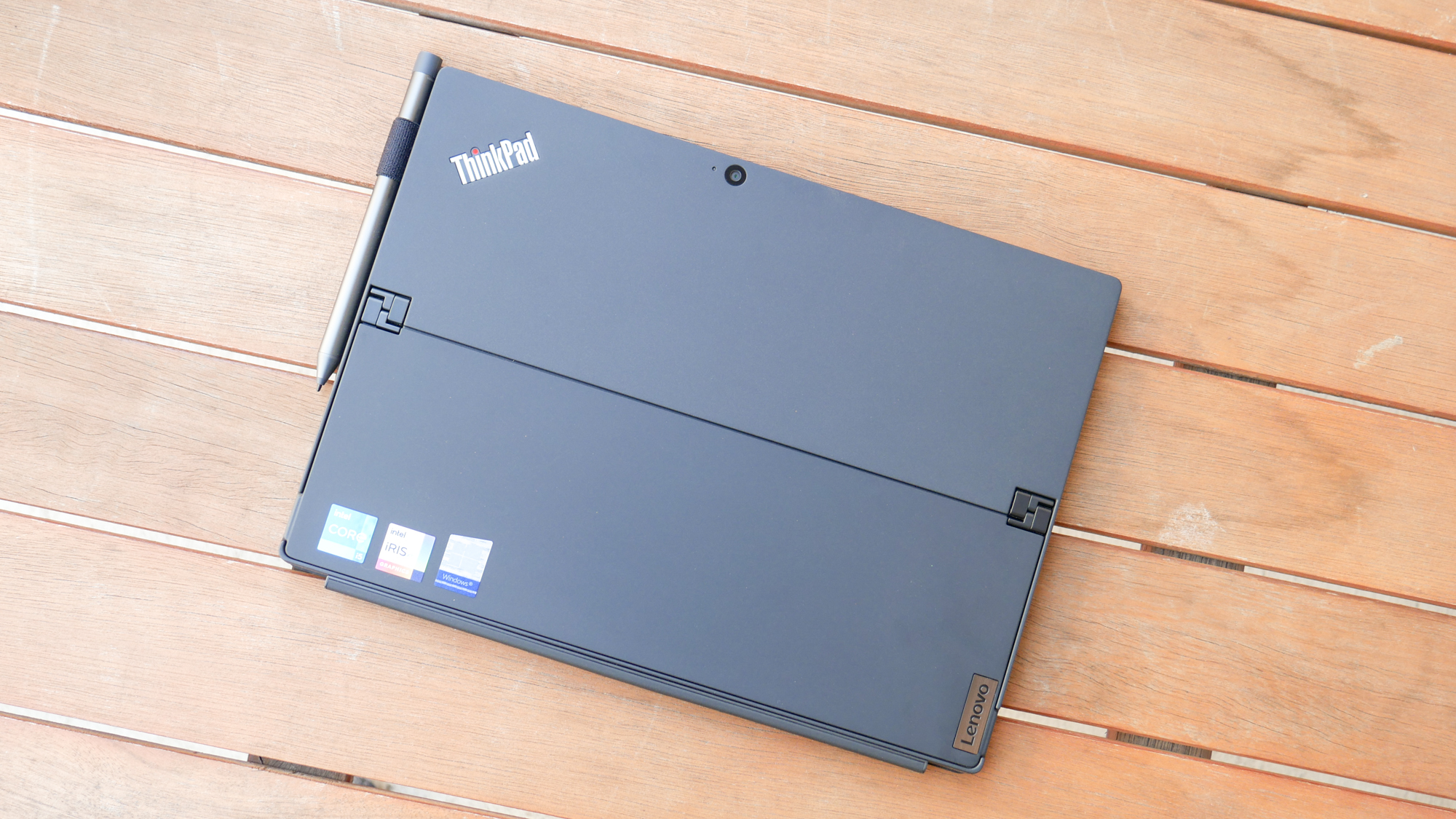
Functionally, the ThinkPad X12 and Surface Pro 7 are nearly identical. The Lenovo uses a familiar kickstand capable of rotating to about the same 160-degree angle as the one on the Surface Pro. This allowed me to prop the tablet up when I was watching videos then rotate it back into studio mode (if you will) so I could draw on it as if it were a canvas.
Measuring 11.2 x 8 x 0.3 inches, the X12 Detachable is about the size of the Surface Pro 7+ (11.5 x 7.9 x 0.3 inches) and the Surface Pro X (1.7 pounds, 0.3 inches).
Lenovo ThinkPad X12 Detachable security and durability
A ThinkPad is a ThinkPad whether it's a tablet, laptop or workstation, which means the X12 Detachable passed military-grade durability tests to withstand harsh environments.
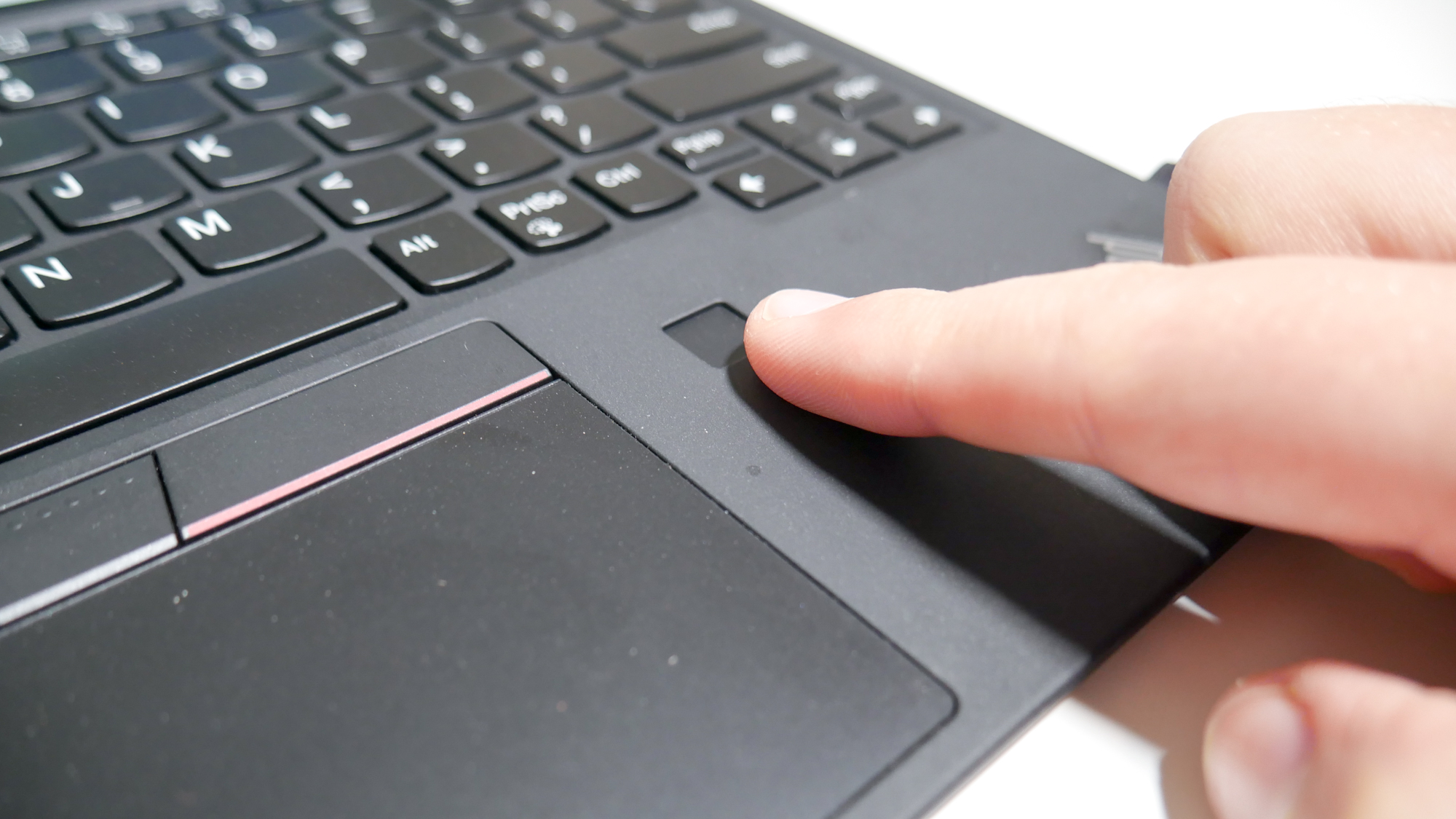
When you aren't climbing Mount Kilimanjaro, the X12 keeps your privacy safe with a few hardware features, including the ThinkShutter lens cover I mentioned earlier. There are also an IR camera and match-on-chip fingerprint sensor for biometric login via Windows Hello — these features ensure your system doesn't get broken into, and also make it a heck of a lot easier to login.
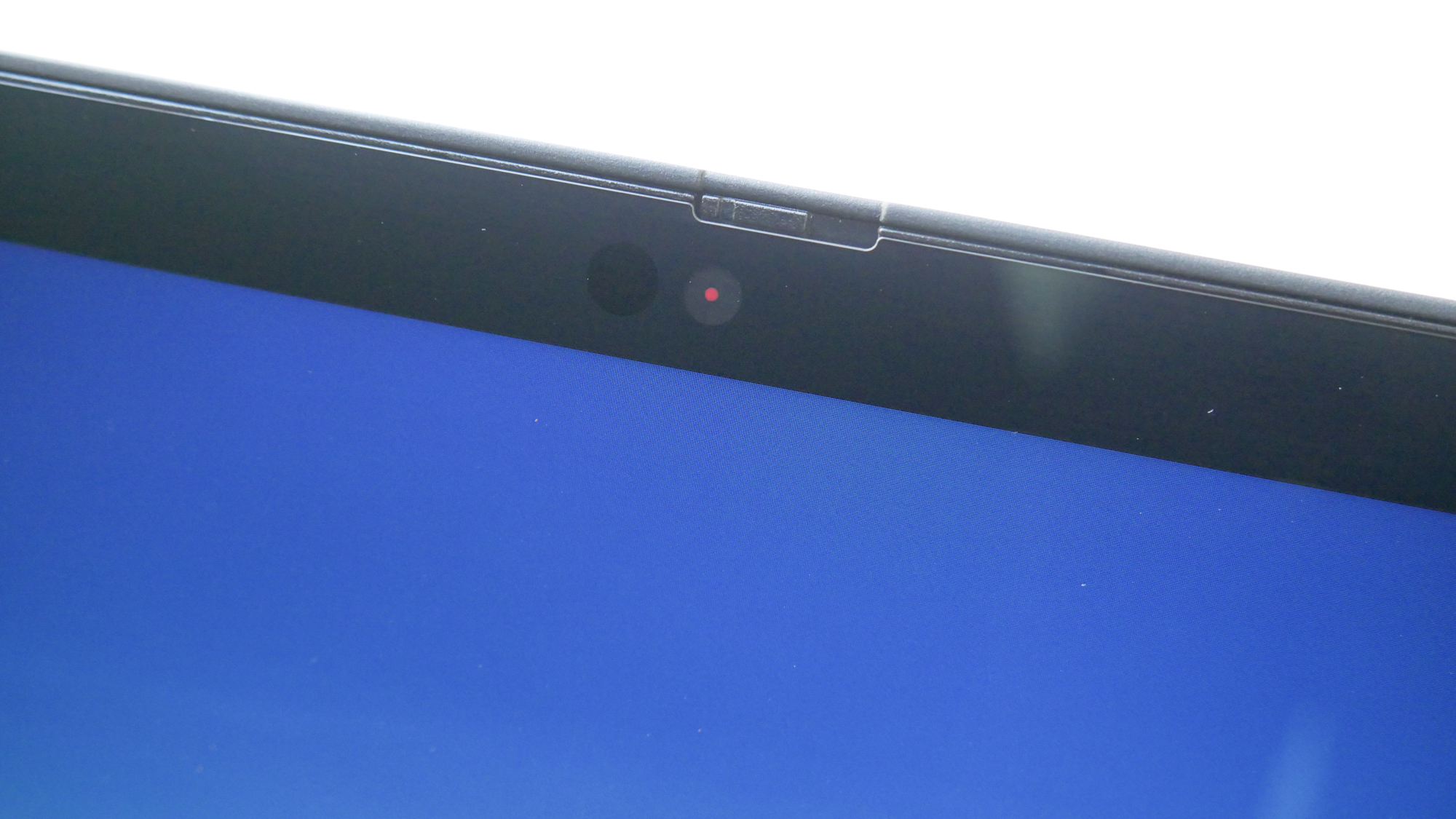
Hiding under the hood is a TPM 2.0 security chip, which ensures all data going to and from the ThinkPad X12 Detachable is encrypted.
Lenovo ThinkPad X12 Detachable ports
One notable omission on the X12 Detachable found on the Surface Pro 7+ is a USB Type-A port.

Instead, you get one Thunderbolt 4 on the left edge near the top and a USB 3.2 Type-C port underneath. Just above the Thunderbolt port is a 3.5mm headphone jack and just below is a Nano-SIM slot for 4G LTE support.
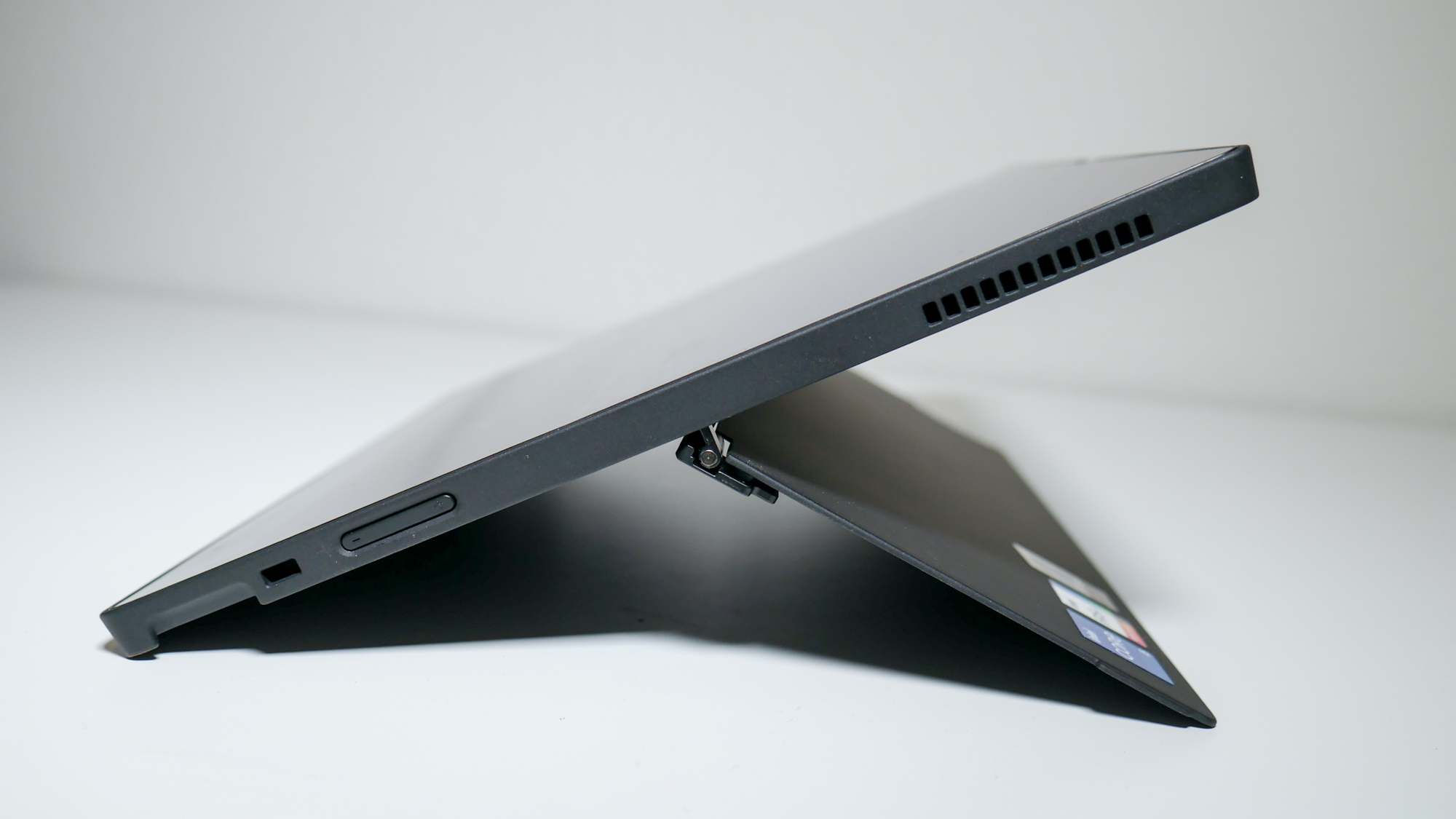
On the opposite side of the X12 Detachable is a Kensington lock slot next to volume rockers.
Lenovo ThinkPad X12 Detachable display
The 12.3-inch, 1920 x 1080-pixel display is colorful and bright. It's more than adequate for browsing the web, scanning through spreadsheets, or choosing the perfect color for your slideshow. It's also great for watching movies or TV shows.
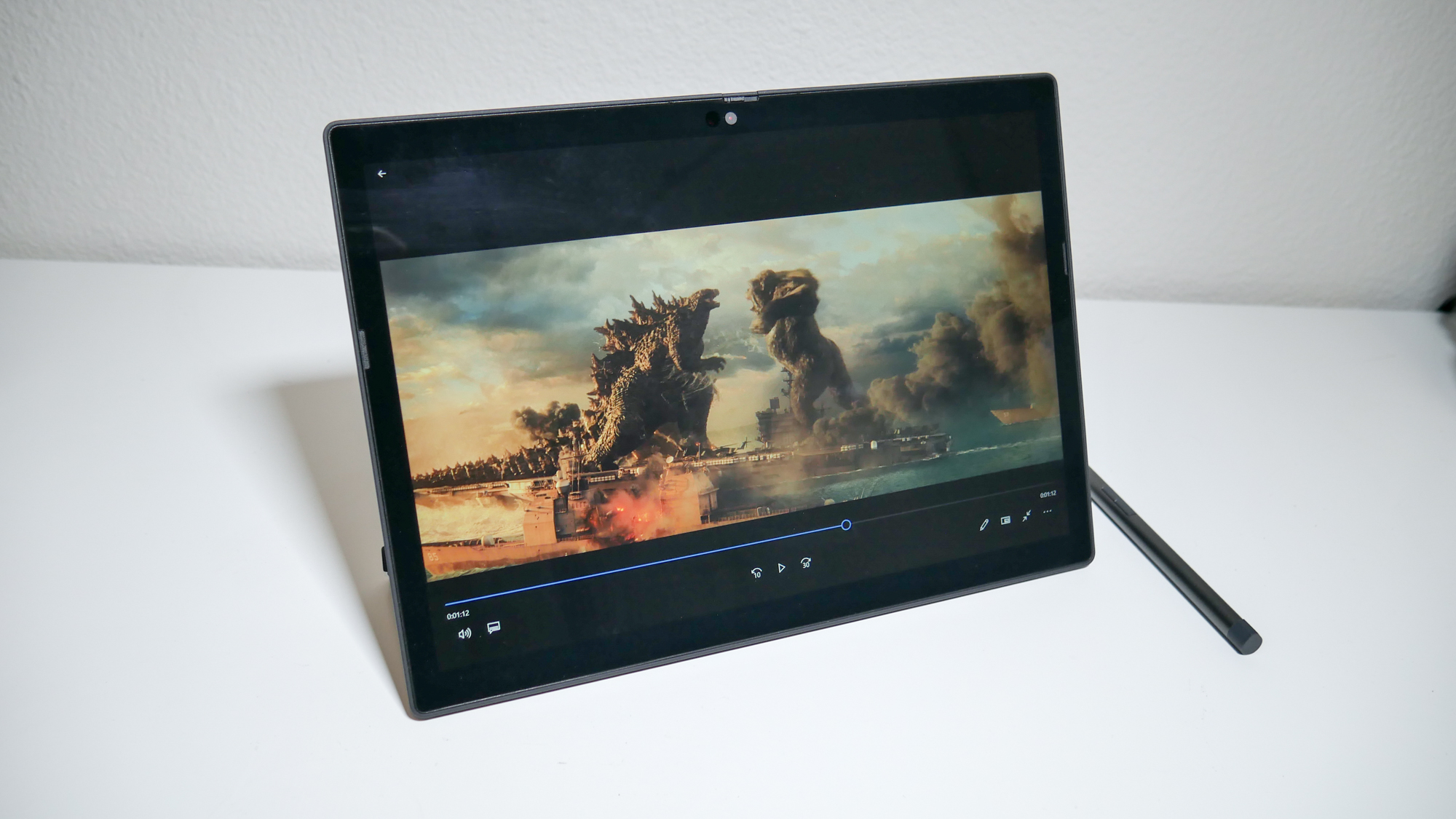
I could see chunks of rubble whizzing through the air in the trailer for Godzilla vs. Kong when the oversized gorilla rampaged through a city. Colors stood out nicely, with orange explosions popping off the dark scales of Godzilla when military forces fired their puny missiles at the aquatic beast. I especially liked the night scene where various hues of neon-trimmed giant skyscrapers gave the city a Blade Runner feel.
As mentioned, the X12 Detachable is fairly colorful. Our colorimeter measured 75% of the DCI-P3 color gamut, putting the X12 almost on a par with the Surface Pro 7+ (76%) and Surface Pro X (74%). The premium laptop average is 85%.
Reaching a peak brightness of 376 nits, the X12 Detachable can easily be used outside on a sunny day. It outshone the Surface Pro 7+ (358 nits) but couldn't reach the Surface Pro X (420 nits) or the average (394 nits).
Lenovo ThinkPad X12 Detachable keyboard and touchpad
Lenovo says the folio keyboard is "optional" but don't let that fool you, it comes included with the base ThinkPad X12 Detachable. And as far as detachable keyboards go, this is easily one of the best.
The folio keyboard mimics those brilliantly comfortable keys found on ThinkPad laptops, like the ThinkPad X1 Carbon, delivering snappy feedback and a surprising amount of travel. Yes, these are more shallow, but they are much more responsive than, say, the keys on Apple's Smart Folio Keyboard for the iPad.

My fingers gingerly bounced from one letter to the next as I typed this review, and while each key is a tad smaller than normal, I didn't make too many typos. Those with larger hands may have a tougher time, especially since the right Alt, PrtSc and Ctrl keys, as well as the arrow keys, are tiny, but overall, I'm really happy with the keyboard.
I typed at 117 words per minute with a 96% accuracy rate on the 10fastfingers.com typing test, both of which top my average 109-wpm and 95% accuracy averages.
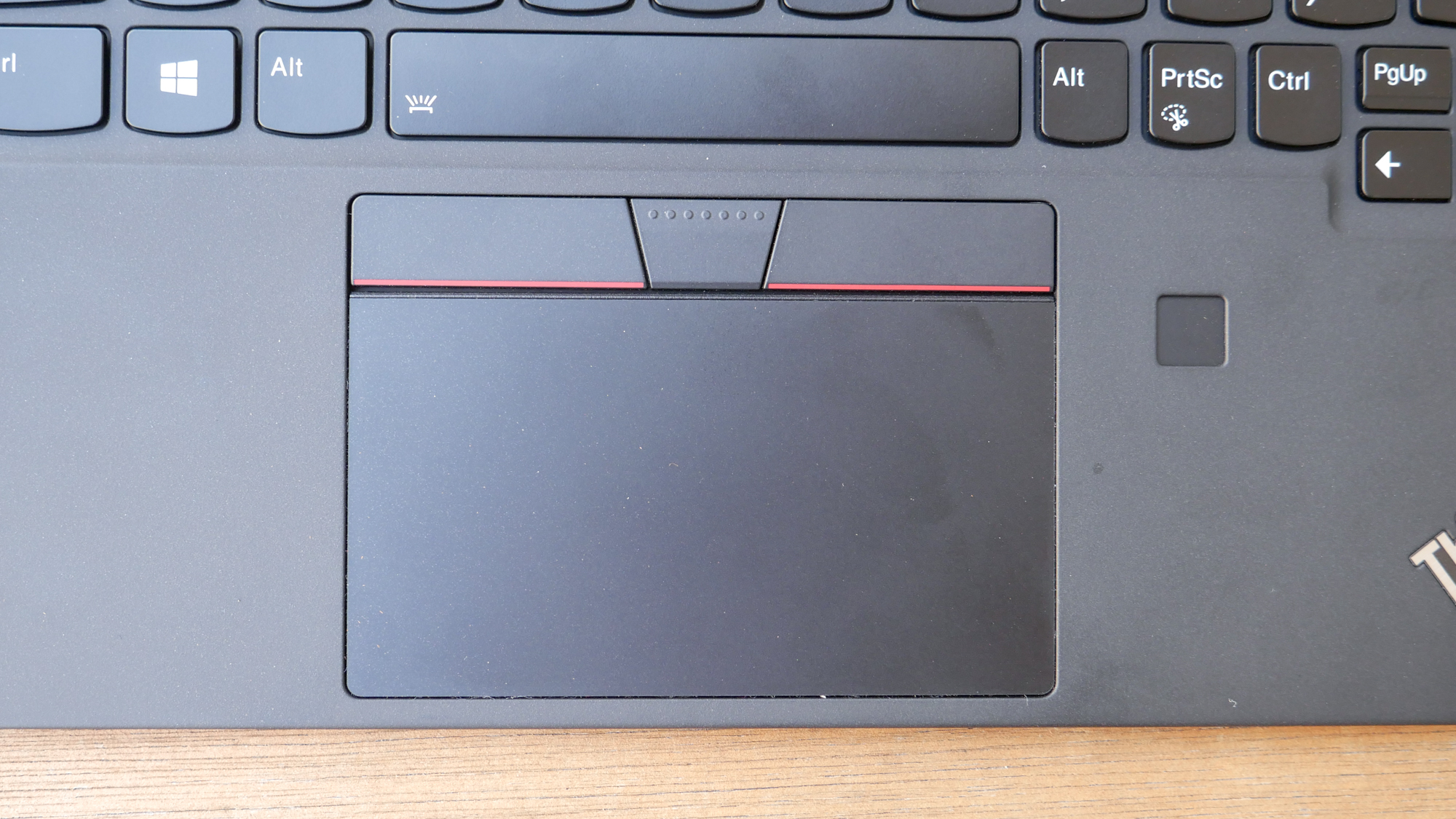
Better yet, the touchpad is a good size and reacted to my swipes and Windows 10 gestures, although some actions required a few attempts. It may not be a proper glass surface, but it gets the job done.

Also included with the ThinkPad X12 Detachable (depending on the region) is the Lenovo Digital Pen. It is a basic stylus with 4,096 levels of pressure sensitivity and two customizable buttons on the side. I had no issues using it to doodle a drawing or jot down a few notes. However, professional artists should consider upgrading to the Precision Pen for $50.
Lenovo ThinkPad X12 Detachable audio
The dual speakers flanking the display are weak, producing tinny audio out of my largely indie and alternative playlists. Tora's "Similar" sounded frail and echoey, resulting in worse sound quality than what you get from some smartphones. In fact, my Pixel 4XL outclassed the X12 Detachable with a cleaner, meatier sound.
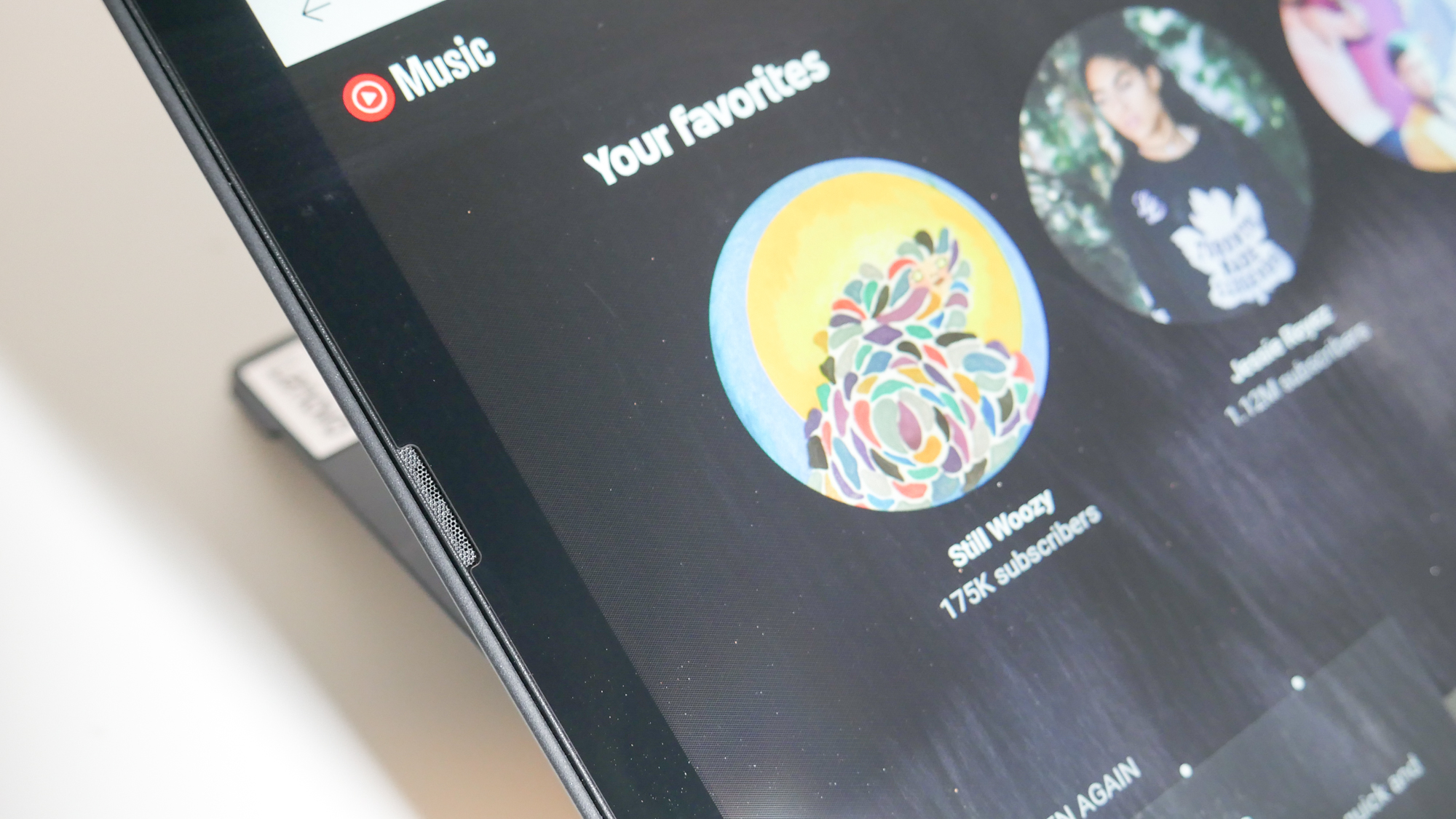
I had to turn off Glass Animals' "Tangerine" before the X12 ruined the song for me. The treble tones were sharp and grainy, the bass sounded like someone gently tapping a woodblock, and the vocals were veiled and distant. Please, for the sake of your ears and that cherished music collection you've curated for the past decade, buy yourself a pair of wireless headphones or computer speakers.
Lenovo ThinkPad X12 Detachable performance
Belonging to a family formerly known as Y-series chips, the Intel Core i5-1130G7 CPU in the ThinkPad X12 is more capable than the ultra-low-power chips of old.
Our review unit, equipped with 16GB of RAM, ran a dozen Google Chrome tabs while my wife created a Pop Art drawing in Affinity Designer. Playing some jams on YouTube Music didn't seem to bother the X12 Detachable nor did a pair of 1080p YouTube videos. I didn't expect the X12 Detachable to handle my workload so well, so props to both Intel and Lenovo on this one.

That performance was quantified in our benchmark testing where the X12 Detachable scored a 4,778 on the Geekbench 5.3 overall performance test, topping the category average (4,212) and falling only a few points short of the Surface Pro 7+ (4,825, Core i5-1135G7). The Surface Pro X, with its SQ2 chip, landed at a lowly 3,077.
It took the X12 Detachable 22 minutes and 54 seconds to convert a 4K video to 1080p resolution, which is 47 seconds faster than what it took the Surface Pro 7+ (23:41). The average premium laptop takes 16:54, so these tablets are outmatched by their clamshell rivals.
The 512GB M.2 PCIe NVMe SSD in our X12 review unit duplicated a 25GB multimedia file in 1 minute and 6 seconds for a transfer rate of 408.4 megabytes per second. That's an OK result, one that tops the sluggish Surface Pro 7+ (348.3 MBps, 256GB M.2 PCI NVMe SSD) and Surface Pro X (267.2 MBps, 256GB SSD) but can't keep up with the average (604.45 MBps).
Lenovo ThinkPad X12 Detachable graphics
You won't be playing Halo Infinite on the X12 Detachable, and that isn't because it'll be hit with another delay. The X12 unsurprisingly relies on integrated Iris Xe graphics. While improved from older integrated solutions, this chip is good for only lightweight gaming and less graphics-intensive workflows.
The proof is in the benchmarking pudding. The X12 ran Sid Meier's Civilization VI: Gathering Storm at a glitchy 12 frames per second, which is worse than the Surface Pro 7+ (15 fps) and the category average (28 fps).
The synthetic benchmarks weren't much prettier, with the X12 Detachable reaching 3,706 on the 3DMark Fire Strike test, a notch ahead of the Surface (3,215) but below the average (4,687).
Lenovo ThinkPad X12 Detachable battery life
Opting for the more efficient CPU paid off in our battery testing. Despite having a small and lightweight chassis, the tablet endured for 11 hours and 6 minutes on our battery test, which involves continuous web surfing over Wi-Fi at 150 nits of brightness.
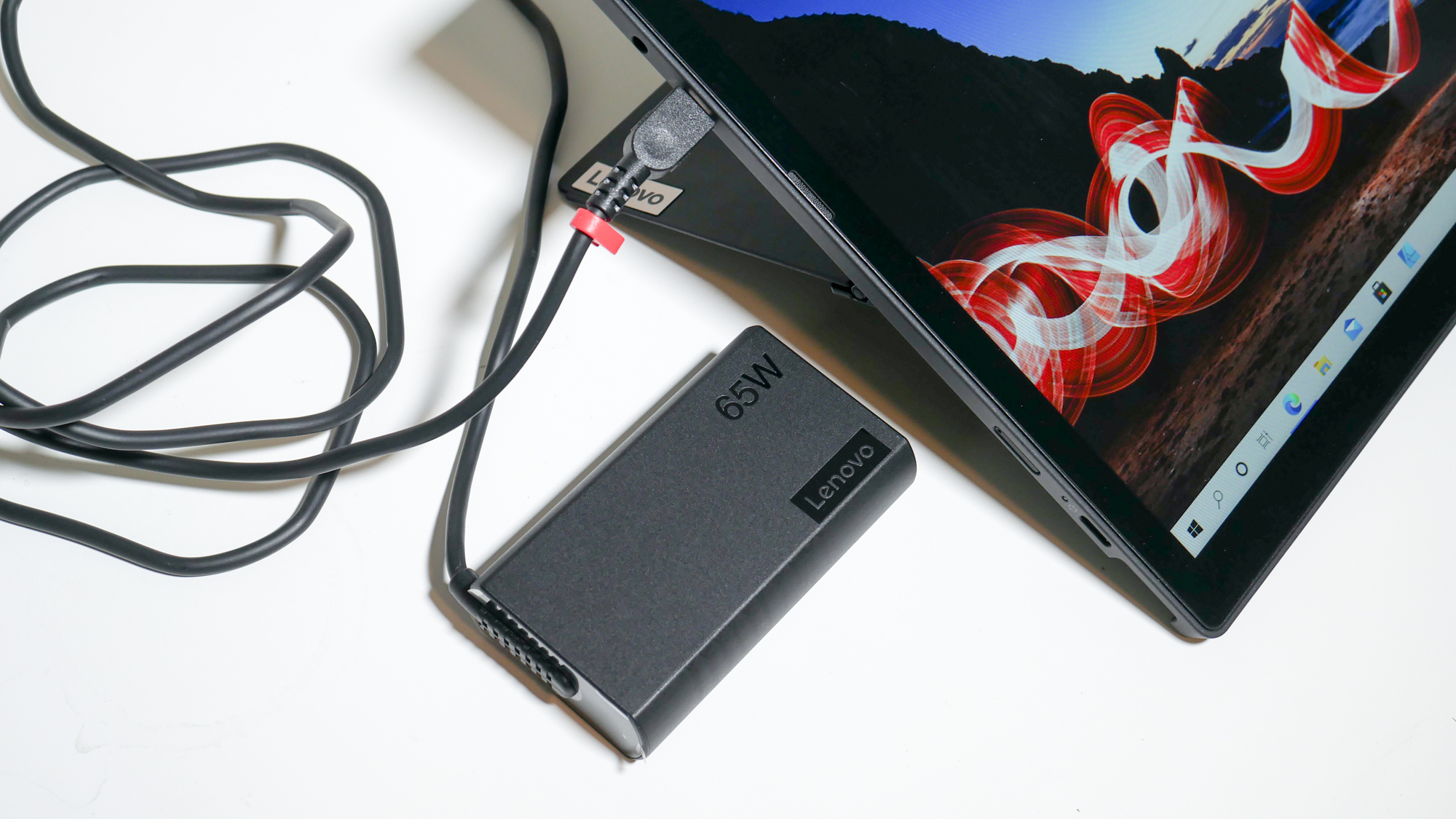
The competition couldn't keep up. The Surface Pro 7+ powered down after 8:49 while the Surface Pro X, with its ARM-based SQ2 chip, reached critical power levels after 9:24. The X12 Detachable even beat the average premium laptop (10:04) by an hour.
Lenovo ThinkPad X12 Detachable webcam
The thick top bezel allows for a decent 5-megapixel webcam, capable of taking acceptable shots even under poor lighting conditions. A selfie I snapped with my wife was detailed; I could see individual strands of her hair and the shape of her teeth as she showed her lovely smile to the lens. However, a layer of visual noise made everything in the picture look grainy. And while the camera captured the green in my baseball-T, the colors in the shot were somewhat dull.
For the best video and photo quality, we recommend an external webcam, but the X12's integrated camera will do just fine for casual video chats.
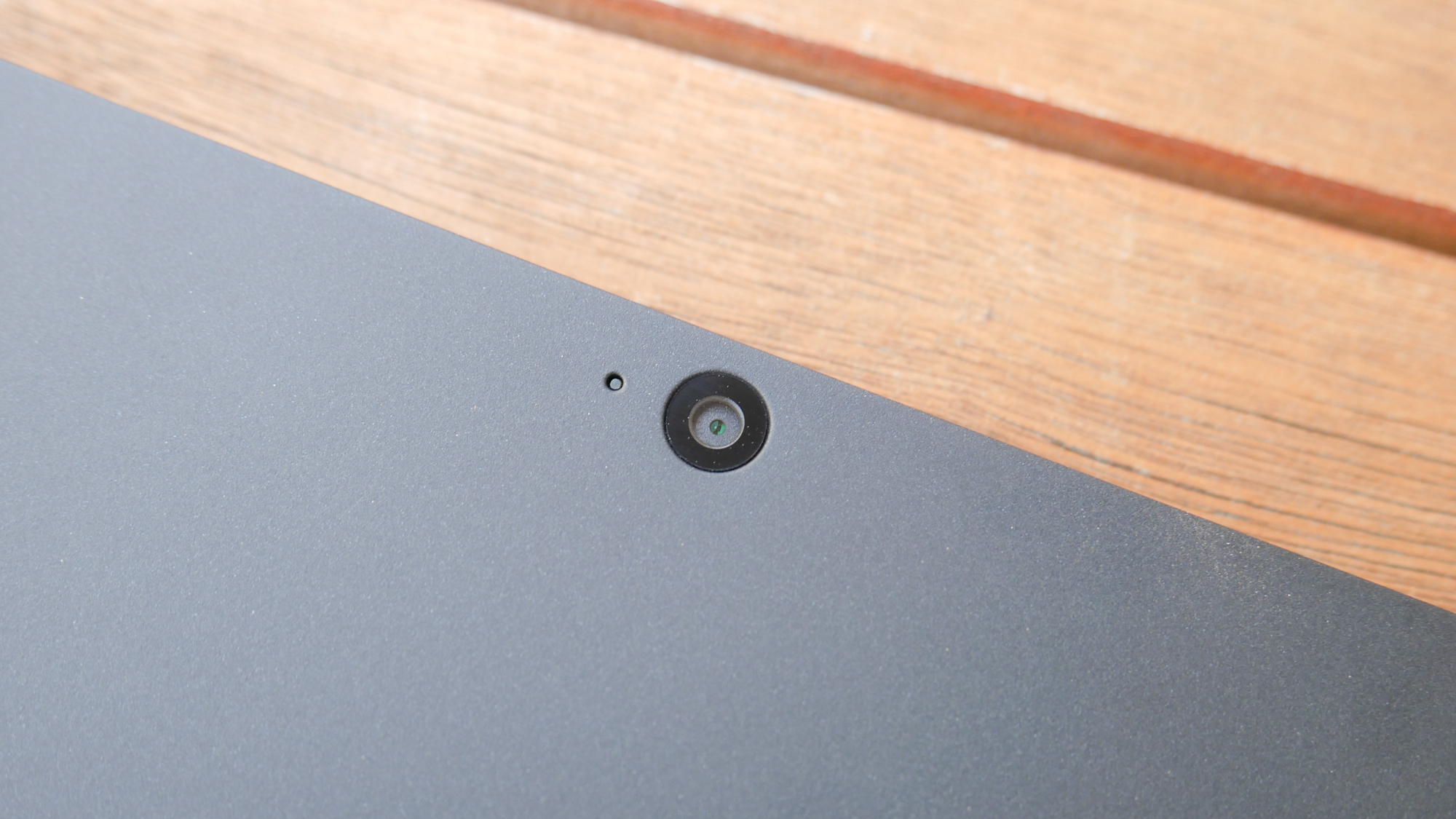
On the rear of the tablet is an 8MP camera for those times when you've misplaced your smartphone and aren't afraid to look like...well, a dork. Except that in this case, I would only use the camera as a last-ditch means of getting a photo. A shot I took in my dimly-lit apartment wasn't much better than the front-facing camera; edges were soft and darker areas looked grainy.
Lenovo ThinkPad X12 Detachable software and warranty
I applaud Lenovo for packaging its OEM tools into a single go-to app.
On the X12 Detachable, that app is called Comercial Vantage. Here is where you can see your system specs, warranty status, and remaining storage/RAM space. You can also check for driver and BIOS updates to ensure your system has the latest security patches. Another Lenovo app I found on the X12 is for Pen Settings, allowing you to remap the buttons to specific commands. There is also the nifty Glance by Mirametrix app, which uses the IR camera and sensor to lock the screen when you walk away and unlock it when you return.
Beyond those Lenovo-specific apps, you have your standard Windows 10 Pro menu, consisting of Groove Music, Paint 3D and Xbox Game Bar, among others.
The X12 Detachable ships with a one-year warranty. See how Lenovo fared our Tech Support Showdown and Best and Worst Brands ranking.
Bottom line
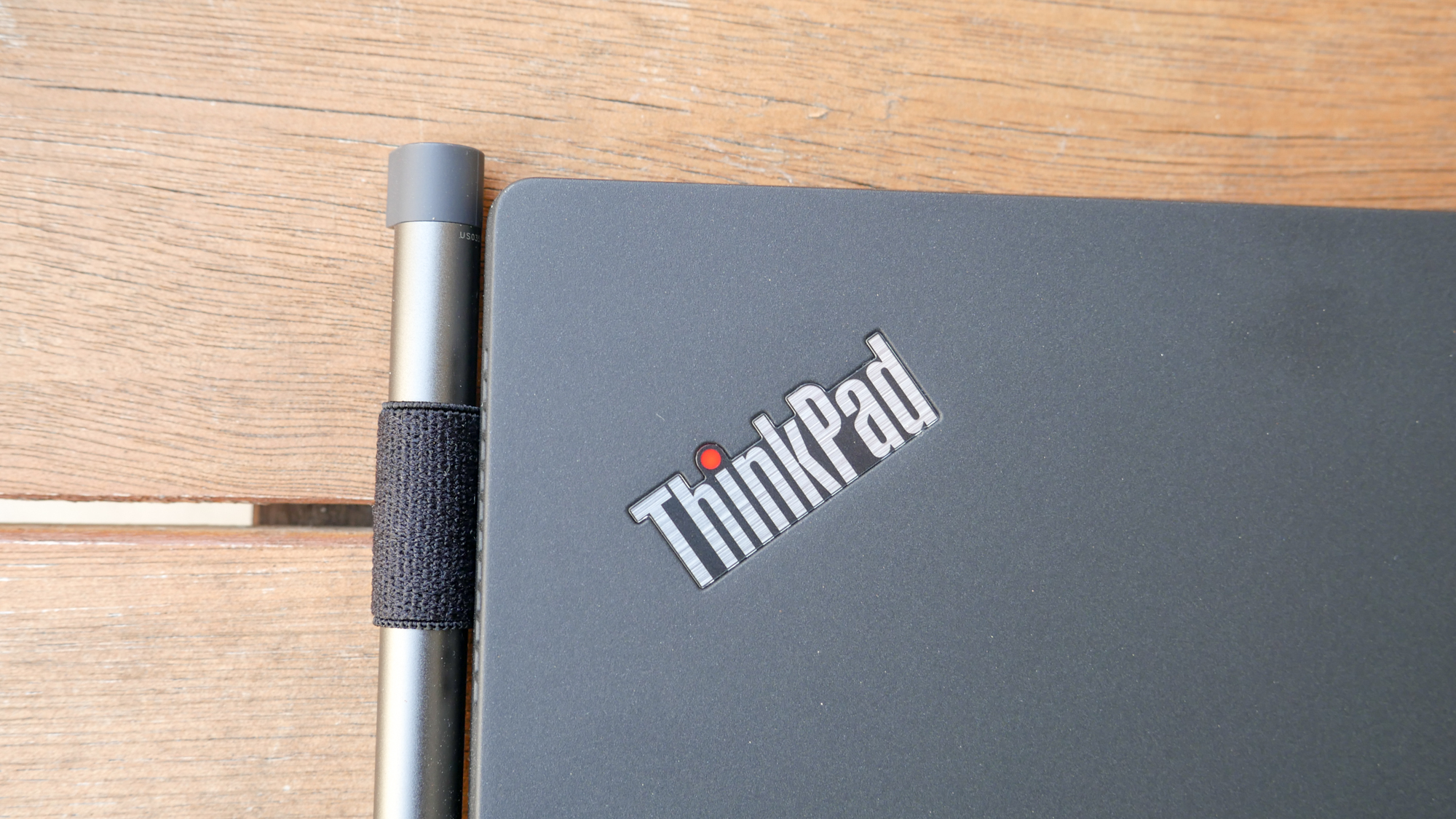
Lenovo had a very clear vision with the ThinkPad X12 Detachable: make a better version of the Surface Pro 7+ for business users who need ultimate portability. The X12 achieves this goal by delivering excellent battery life in a lightweight chassis without sacrificing (much) performance. The 12.3-inch display is adequately bright and vivid, and the detachable keyboard (which comes bundled with a stylus in the US) is comfortable to type on.
It's almost the complete package if not for a missing USB Type-A port (found on the Surface Pro 7+) and the lackluster speakers. The cameras are also meh and the bezels are chunky, but those are small quibbles for a 2-in-1 tablet that does so much right.
This leads us to the question you may have been wondering throughout this review. Would I buy the ThinkPad X12 Detachable over the Surface Pro 7+? Despite it having less powerful CPUs, the ThinkPad X12 feels like a more complete package in large part because of its all-day battery life and the included keyboard and stylus. If you can get the Surface Pro 7+ bundled with its accessories for about the same price, then that question becomes a lot more difficult to answer. For now, the X12 is the better of the two business detachables, if only by a razor-thin margin.
Phillip Tracy is the assistant managing editor at Laptop Mag where he reviews laptops, phones and other gadgets while covering the latest industry news. After graduating with a journalism degree from the University of Texas at Austin, Phillip became a tech reporter at the Daily Dot. There, he wrote reviews for a range of gadgets and covered everything from social media trends to cybersecurity. Prior to that, he wrote for RCR Wireless News covering 5G and IoT. When he's not tinkering with devices, you can find Phillip playing video games, reading, traveling or watching soccer.
